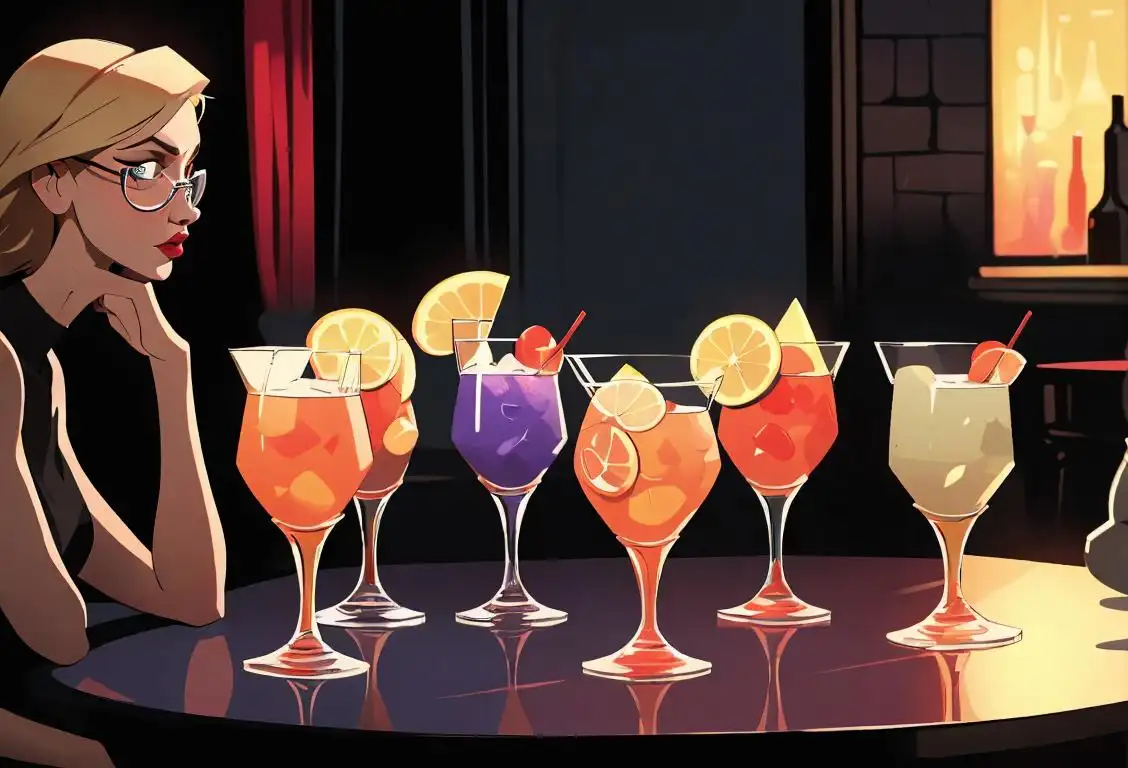National Umbrella Day

With 7038 mentions online, National Umbrella Day has certainly been making a splash! This day isn’t just for singing in the rain, folks - it's a day to tip your hat (or umbrella) to the marvel of engineering that keeps us dry even during a torrential downpour.
When is Umbrella Day?
It's national umbrella day on the 10th February.
History of National Umbrella Day
Can you imagine a world where getting caught in the rain meant accepting your soggy fate? Neither can we! That’s why National Umbrella Day exists, and it’s been catching people's attention online with a peak of mentions on 10th Feb 2016.
Why We Celebrate the Umbrella
Umbrellas are the unsung heroes of any dreadful weather day. A good umbrella can be the difference between arriving at your destination like a drowned rat and strolling in as if the sun was shining. They’ve been around for thousands of years, shielding us from not only rain, but the scorching summer sun too. And in modern times? They’re even used as fashion accessories!
How to Celebrate National Umbrella Day
Why, with an umbrella of course! Rain or shine, pop open your favorite brolly and take a leisurely walk. In the spirit of the day, why not gift a unique umbrella to a loved one? Or go a step further and host an umbrella-themed party, where guests can show off their most colorful, whimsical, or sophisticated umbrellas.
History behind the term 'Umbrella'
3500 BCE
Ancient Parasol Origins
The origins of the modern umbrella can be traced back to ancient civilizations such as Mesopotamia, Egypt, and China. In these early cultures, the umbrella, or more accurately, the parasol, was used primarily as a shade from the sun. These early parasols were made with materials like leaves, feathers, or branches and were used by both men and women of high status.
11th Century BCE
Assyrian Umbrella Culture
The Assyrians, an ancient civilization in Mesopotamia, took the use of parasols a step further by using them as symbols of power and authority. The umbrellas made from luxuriant materials were carried by servants over the king or other important individuals to provide shade and demonstrate their status.
4th Century BCE
Chinese Waterproof Umbrellas
During the Zhou Dynasty in ancient China, the waterproof umbrella made its appearance. These umbrellas were crafted using oiled silk or waxed paper for the canopy, and bamboo or wood for the handle and frame. The innovation of waterproofing materials allowed umbrellas to be used in both rain and shine.
17th Century CE
European Umbrella Adoption
The umbrella as we know it today gained popularity in Europe around the 17th century. Initially, the umbrella was introduced from the Middle East, where it had been used for centuries. In Europe, umbrellas were initially seen as a luxury item, and the usage was mainly limited to women. Umbrellas at this time were primarily made of whalebone or wood with oiled silk canopies.
1768 CE
Umbrella Patent
In 1768, the first umbrella shop, James Smith and Sons, opened in London and introduced the modern-day umbrella to the masses. Samuel Fox, an English inventor, further revolutionized the umbrella's design by inventing the steel ribbed umbrella in 1852. This innovation allowed for a more durable and easily foldable design, making umbrellas accessible to a wider range of people.
20th Century CE
Umbrellas in Pop Culture
The umbrella became a popular symbol in literature and pop culture during the 20th century. In Mary Poppins, published in 1934, the magical nanny uses an umbrella to fly. Additionally, the iconic image of Gene Kelly dancing with an umbrella in the movie Singin' in the Rain, released in 1952, further cemented the umbrella's cultural significance.
Did you know?
Did you know that the word 'umbrella' originates from the Latin word 'umbros' which means shade or shadow? Additionally, the world's largest umbrella (according to the Guinness World Records) is located in Saudi Arabia and is 45 feet tall!Tagged
fun celebration history weather umbrella rain sunshineFirst identified
31st January 2016Most mentioned on
10th February 2016Total mentions
7038Other days
Umbrella Day
Hot Chocolate Day
Video Game Day
Vodka Day
Bourbon Day
Martini Day
Beer Lovers Day
Chili Day
Lasagna Day
Album Day








